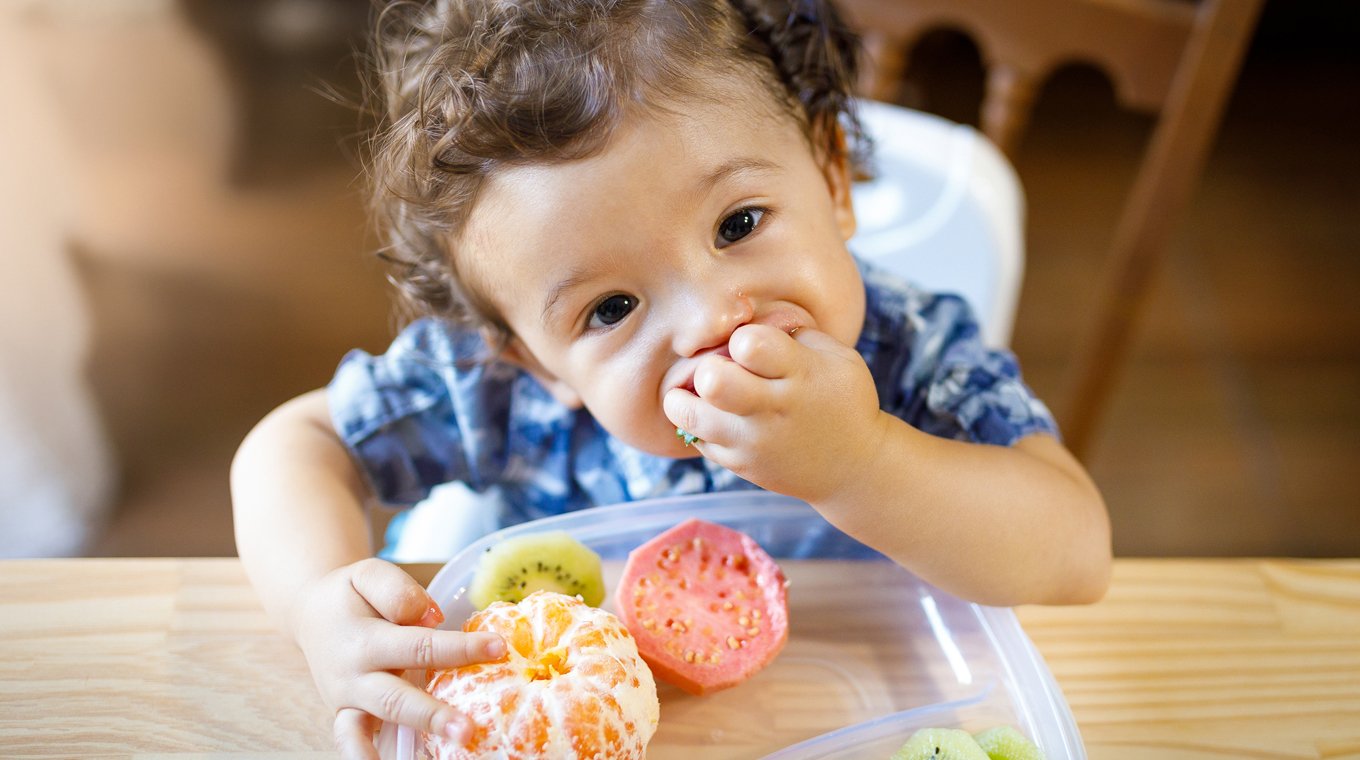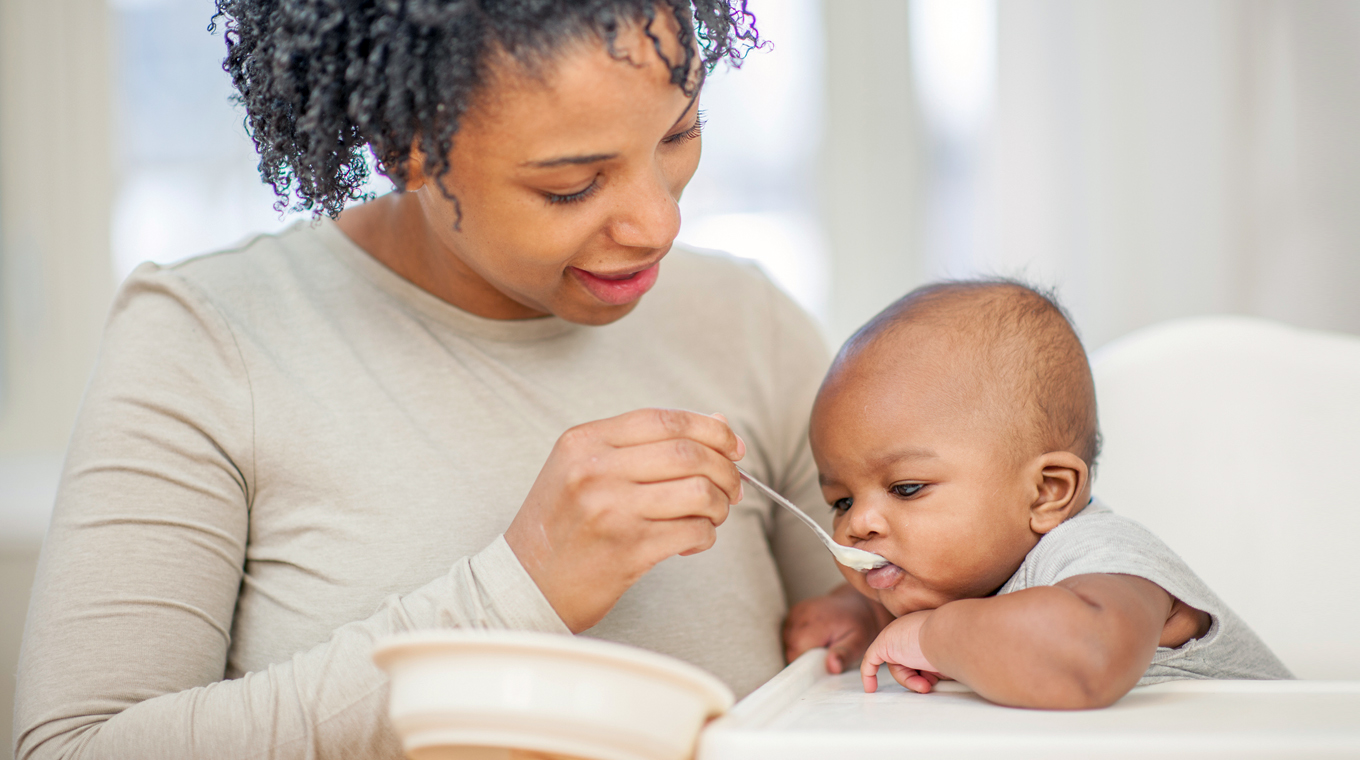
In this article
Ever since you brought your little bundle of joy home, you’ve made sure to do everything right to keep them safe. You make sure they sleep safely, and you’ve baby-proofed just about everything you can. But what about one of the biggest concerns of all? What can you do, and how can you prevent your baby from choking?
In honor of Baby Safety Awareness month this September, we’re diving into education and specific safety tips about common choking hazards, how to prevent your baby from choking, and what you should do if your baby is choking.
Help! What’s the baby choking on?

When your baby gets to an age where they start moving and grooving a whole new world opens up, for you and for them. They continue to discover the world around them in many ways, including putting everything they can get their hands on in their mouth. Keeping that in mind, let’s look at the most common choking hazards for babies.
Foods
The unfortunate fact is that choking is the fourth leading cause of unintentional death in children under the age of 5. So, to keep your little one as safe as you can at snack and meal time, make sure that any foods you serve are cut into small pieces.
Common food choking hazards include:
- Corn kernels (cooked or raw)
- Whole nuts and seeds
- Whole cherry or grape tomatoes
- Hard raw vegetables or fruit, such as apple slices or carrots
- Uncut canned fruit
- Uncut, round vegetables or fruit such as grapes, berries, and cherries,
- Uncooked, dried fruit, such as raisins
“The diameter of your child’s airway is about the same diameter as their pinkie finger,” Stephani Laing, the founder of Elite Emergency Response previously told Mom.com. Keep this in mind, whether they’re having grapes, hotdogs, cheese, or pasta make sure to keep it small.
Toys
There is a reason that some toys come with specific age warnings. Toys with small parts or things that detachor things that detach aren’t ideal for babies. For example, a toy that’s made with durable material to get your baby through teething and early toddlerhood is safer than a toy stuffed with batting that has button eyes. With enough wear and tear your baby could choke on the stuffing or end up with a button in their mouth.
Common toy choking hazards include:
- Legos
- Marbles
- Balloons
- Small toy parts that detach or can easily break off
- Toy stuffing and foam
- Buttons, beads, or other or other decorative items that detach
- Magnets and button batteries
Button batteries are found in many toys, and contain dangerous chemicals that can be extremely harmful to the digestive system. Magnets can also cause catastrophic damage to a child’s GI tract and can lead to blood poisoning and death. Even more dangerous is if more than one magnet is swallowed, as they can attach to each other and cut off blood supply.
It is considered an emergency if your child ingests any type of battery or magnet, and you should take your child to the ER immediately.
Household items
Ah, the infamous junk drawer. It’s got all the obvious unsafe culprits you keep away from little fingers like scissors and screwdrivers, but what about the other small odds and ends?
These seemingly harmless knickknacks aren’t anything you want your baby getting in their mouth — keep them out of sight and out of reach.
Common household items that could be choking hazards include:
- Screw and nails
- Coins
- Buttons
- Batteries
- Pen caps
- Paperclips
- Thumb tacks and push pins
- Safety pins
How to prevent choking

Being informed and educated is only part of how you can prevent choking. Putting everything you know into practice is the other half of the battle. Here are a few ways to keep prevention from and center.
- Whenever your baby is eating, have them sit up. Yes, this means no snacks in bed or trying to balance learning to walk and eating food at the same time.
- Safe eating time also includes having your child sit in a high chair or another secure location. Be sure to keep them in your line of vision.
- Store choking hazards out of reach of your littles and/or have them secured with a child lock so little hands can’t get into them.
“We used to have movie night with snacks in the family room altogether with sleeping bags and squishmallows galore. But it only took one time for my baby to have a major coughing fit (that at first, I thought was them choking),” mom of three Melissa S. shared with Mom.com. “After that, we decided it was safer to have snacks with an intermission in the kitchen.”
What to do if your baby is choking

Unfortunately, accidents do happen, and babies do get things into their mouths that don’t belong there. So in case you ever find yourself in the situation, here is what to do if your baby is choking.
Remain calm
When you think your baby is choking it’s hard to not completely panic. But the first thing to do is make sure your baby is actually choking. If they’re coughing or crying it means they’re able to breathe. If not call 911 and start to alternate the following movements to help relieve your baby and dislodge what they’re choking on.
- Baby face down Start off by placing your baby facedown on your forearm, which rests on your leg, and firmly pat their upper back (between their shoulder blades) swiftly. The goal is to knock the object out of your baby’s airway.
- Baby chest up After giving your baby about five solid pats on the back, turn them over chest up on your thigh. Relax your baby’s head back (below their chest) and use two fingers to press against their breastbone about five times.
Keep repeating these movements and alternating between holding your baby face down and face up until help arrives.
Should I perform the Heimlich maneuver on my baby?
Keep in mind that the Heimlich maneuver should always be second to back blows for an adult or a baby.
If the five back blows don’t work, move on to the Heimlich maneuver using these steps:
- With your baby face up, support them with one hand and arm cradling their head and body
- Tilt your baby with your leg supporting them, bringing their head closer to the floor.
- Using your free hand, place two fingers above their navel, just below the breast bone.
- Perform five forceful thrusts to help expel the foreign object.
- Continue to alternate between five back blows and abdominal thrusts until the item is dislodged.




